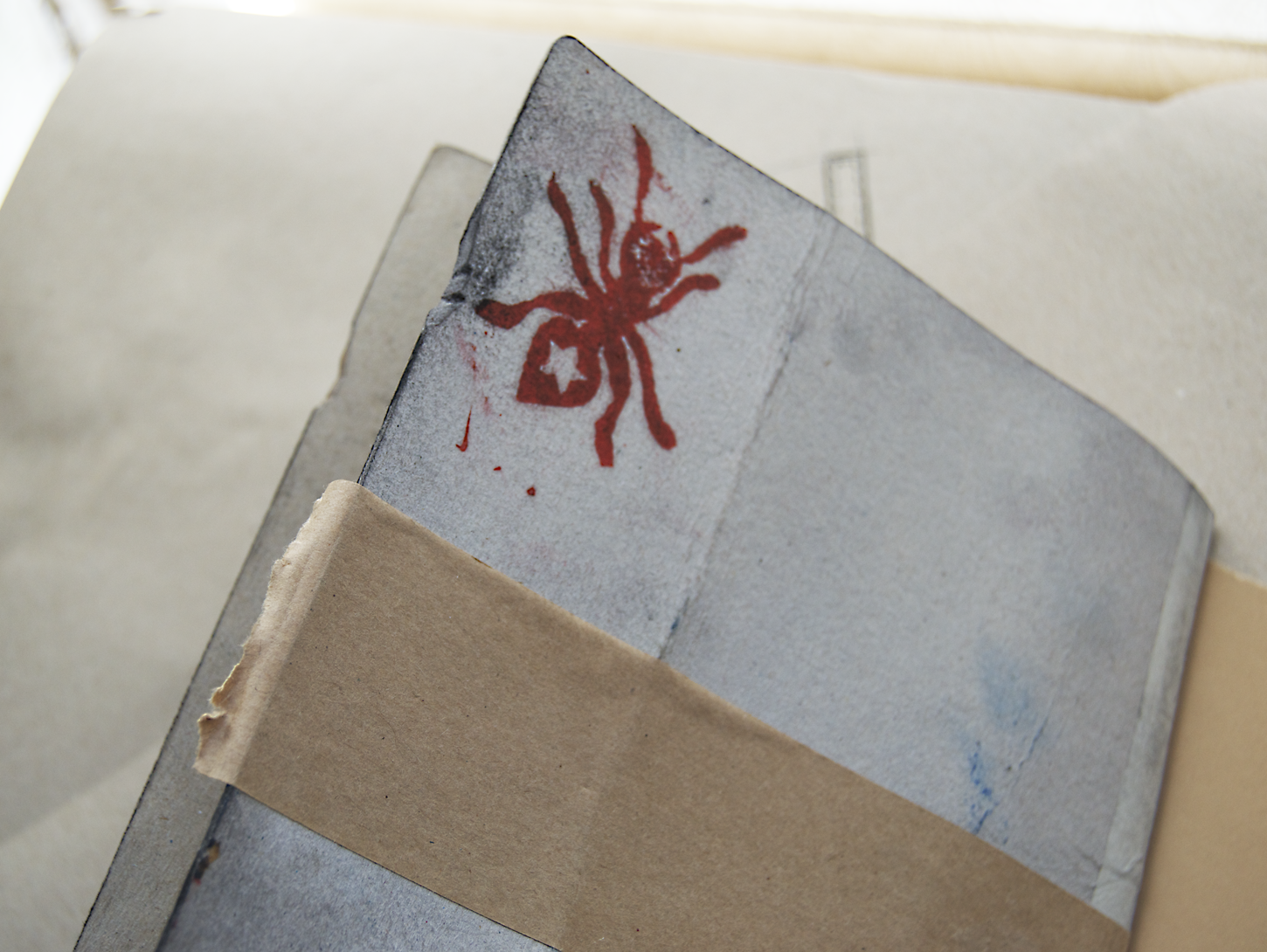The auspicious return of the Checiny Diary, and the curious contents contained therein!
Read part 1 and part 2, should you desire additional information…
Our intrepid entomologists, the Dapper Dr Dander, the Mesmerising Dr Mickiewicz, and Doctor Henrietta Gaberdine, the Astonishing Amputee, have nearly concluded their studies. Dr Gaberdine’s salvation through bread penicillin was the crescendo of our last installment, now the task is merely to catalogue, collate, and head back to their respective universities. Until…

Throughout the document, traces of subsequent assessment by state bodies are found, indicating findings for future use, such as the silk puttees, later used in agriculture worldwide, and the milking aphids. AAIA and MInsAg stamps freckle the pages, but the eagle-eyed among you may have spotted several more…
“Saturday – We were woken at midnight by Teresa & Danuta. We could hear shouts [and] horses outside… In the kitchen downstairs, lying prone on a tabletop, [was] a middle-aged man, eyes rolled white, foam on his lips”
At this point, the handwriting of Dr Gaberdine becomes frantic, and at points hard to read:

“I knew him by sight, a local drinker, his skin burnt russet as he stood with his compatriots at the side of the square, the air blue with their stinking Russian cigarettes. Usually tight [drunk – ed] by midday, they kept early hours, unusual to see them after nine. The smell though, my god, he was still smoking!
“My eyes stung when I entered the room…God it wasn’t the stove, his legs [illegible] they were still melting, twisted, blackened – I could feel the heat on my hands as it burnt the heavy tabletop!”
What could have befallen this poor indigent that could have shocked a hardened war entomologist? What was in Checiny?
“Dr Mickiewicz, by damn she’s fast, a fire bucket filled with sand, she threw it over the table, what was left of the man, Thank god for the sandy soil!
“The man,
Alojzy, [illegible]…From the middle of his thighs, to his feet, had beenblisteredandburntwith an agent so corrosive as to have burned through clothing, skin, and bone. The burning smell observed was only that of flesh, notacid. It was bloodyCantharadin! That’s why Dr Mick threw the sand, it’simperviousto everything else!!!”
At this point, as the photographs show, Dr Gaberdine’s mental state isn’t the only thing affecting the legibility of the record – it’s been imperfectly censored at a later date.

Clues begin to emerge as to the cause of the man’s injuries, and our intrepid narrator’s spirit takes over:
“Possibly
Blue Short Wing? I have a ministry copy of Dr Doran’s Field Guide, but there’s nothing that could do this!!!”
– Dr Gaberdine’s sketch is most likely a variety of Blister Beetle, the only possible source of the Cantharadin corrosive they observed.
“The farmer who found the man said he was know for sleeping in hedges & fields in the summertime. He heard a scream, waking him and his family, he thought to prevent a theft, ran outside with his gun, and at the edge of his yard he found
Alojzytrying to crawl towards him, He dragged the man to a trailer, and brought him on thetwenty minutetrip to town, where he knew ‘the doctors’ were staying”

The record includes a map to the farm, drawn by Teresa, but this has been ripped away, and other attempts have been made to obscure the location of the dangerous beetles.
The next section is hastily written on the most damaged section of the diary, and details the aftermath of their expedition to the farm:
“Dawn is breaking. We’re packing. The farm, it was dark when we arrived, doors and gates locked. We had to leave our bikes and walk up the path. We had all wrapped up as best we could in leather gaiters and silk puttees, but there’s now way to know yet what protection they afford.
“On the eastern side of the farm yard,
behind a barn, the grasses lookedtrampled,blackenedandoily, with a mound of displaced earth beside the wooden barn wall. There was a hole, as though a large dog had tried to get under the wall. Or something had tried to get out.“We ran back to the bikes, and in the tire tracks in front of the farm, Dr Dander tripped on something. Half buried in the dirt,
greenin the moonlight, half the wing casing of aLytta Stygica– it was12 inches long! Who knows what damage they can do? We have to leave for Krakow immediately!”


Throughout the document, among the AAIA and MInsAg logos, two other stamps appear, a gold hammer and sickle, and the less familiar red ant, insignia of the newly formed KGB’s insect research division. It’s not insignificant that insect research occurred under Stalin as part of the KGB and not a scientific entity.

The final entry hints at the reasons for the diary’s long disappearance. Our intrepid entomologists’ discovery has been exposed, and their hopes of flight with their research intact are lost. What terrible damage can be wrought by a shadowy state with access to one of the most destructive mega-insects thus far discovered?
“DAMN THEM” WHY DID I NOT PAY ATTENTION? THE FARMER, HE DIDN’T BRING A HORSE AND CART…HE WAS DRIVING A BLOODY
GAZ POBEDA! HOW WOULD A FARMER GET A CAR LIKE THAT IF HE WASN’T APARTY MEMBER? I CAN SEE THE BLOODY LIGHTS OUTSIDE! IF YOU’RE READING THIS YOUPOLITBURO BASTARDS, THESEBEETLESARE DANGEROUS…THEY NEED TO BECONTAINEDANDDESTROYED!!!”
How exactly Drs Gaberdine, Dander, and Mickiewicz managed to escape interrogation, and flee across Europe is still classified, but all rumours that they employed mega-insects to do so are unproven…

